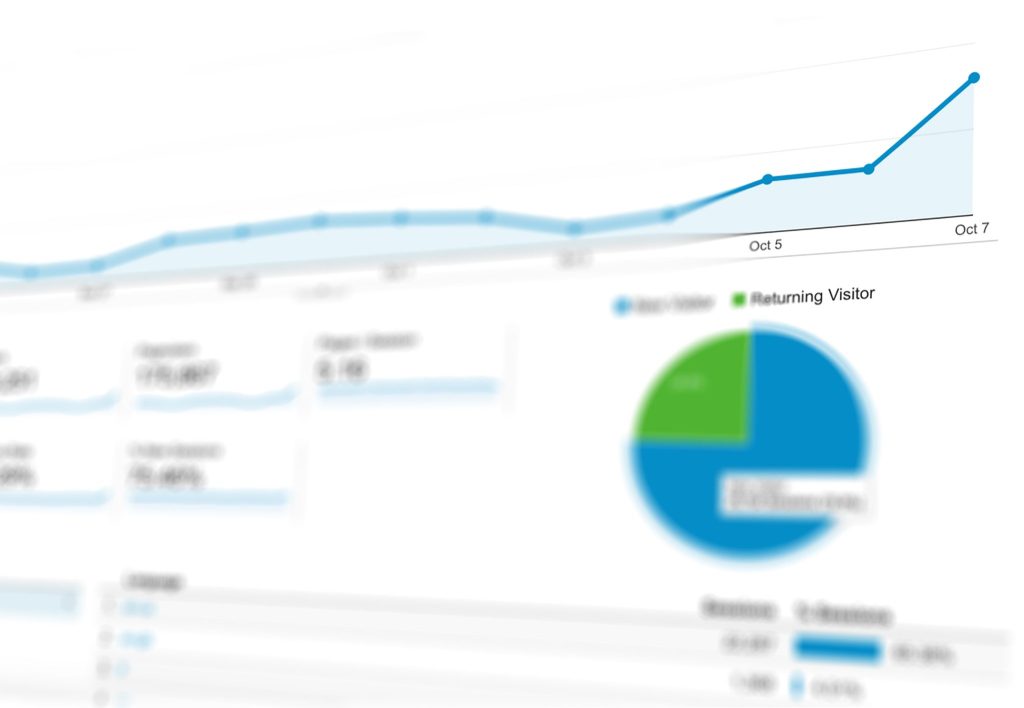Depending on the size of your website, the type of SEO audit, and whether you choose a professional or DIY site audit, your costs for an SEO audit can range from the cost of the resources you allocate to the project to several thousand pounds. At Yellowball, we keep the costs of an SEO audit as reasonable as possible for our clients because we know how essential this service is to the overall success of your paid SEO services and strategy. In this article, we’ll look at the different types of SEO audit services, what the audits involve, why they matter, and how they affect SEO company pricing.
What is an SEO website audit?
An SEO site audit is the process of assessing your website’s content, structure, UX and their impact on your site’s performance in terms of organic search, organic rankings and conversion rates. Essentially it’s a health check of your paid SEO strategy and the digital assets that may affect its performance. The purpose of performing an audit is to identify any problems with your site that may be affecting your SEO, so you can align your digital assets with your SEO goals, implement best practices more effectively, manage Google search engine optimisation costs, remove outdated practices, and get on Google’s best side.
Is it the same as a Google automated report?
Google offers an automated report on SEO performance for all websites through the search engine. While this is a great starting point, it can’t deliver on many of the most important objectives, including an estimate of overall investment and business impact.
In fact, most SEO tools allow you to run audits or reports on a website. At Yellowball, we use SEMRush to crawl a website and create a list of errors that it can identify on a site. These errors and warnings are somewhat prioritised and useful for everyday website management and maintenance, or even an indication a that an audit is needed, but are not a substitute for a proper audit itself.
The issue here is that these audits are of limited value. They are also very easily accessible, producing a number of problems:
- Anyone can produce one of these ‘audits’. This means that unless you are using a reputable and involved digital marketing partner, you may very easily end up with an automated report that took less than a minute to produce rather than an actual SEO audit.
- Issues without solutions. These reports show that an issue has been picked up but give you no strategy or insight on what impact it is having on website visibility or how to correct it. A proper audit will not only detect SEO issues, it will make recommendations on how to correct them and the impact these measures will have on your SEO strategy. You will also have direct access to a team who can implement these corrections.
- Little to no context. These reports are very superficial and don’t take into account critical website data, making them very limited in terms of their effectiveness.
- No strategic value. Automated reports do not offer any strategic value, insight into the impact of the issues and how to overcome them, or insight into the impact of correcting these issues. It also can’t tell you your ROI, overall investment, and business impact.
What is included in an SEO audit?
SEO audit processes will differ between specialists, but from our agency experience, an SEO site audit is far more than a paint by numbers report. Our SEO audit will take into account a swathe of items, including:
- Keyword Analysis & Competitive audit – This looks at the search demand for your niche, looking at what keywords users are typing into Google Search and the relative competition by other websites showing up for these searches. This form of market research focuses on what’s going on outside your website by evaluating your website against your competition. You’ll see your strengths and weaknesses compared to theirs and receive recommendations that make your SEO efforts more effective.
- Technical SEO audit – This process evaluates your website from a technical SEO aspect, searching for broken links, duplicate content, page speed load times, and more. The majority of resolutions found in this leg of an audit would likely require the assistance of a developer. This should be a standard aspect of an assessment from your audit team.
- On-Site SEO audit – This covers an analysis of keyword implementation in SEO relevant page elements like page titles and headings, eligible image optimisations, and the implementation of structured data, and evaluations of website structure, and an assortment of other elements.
- Content & Link Building Analysis – This leg focuses on the longer terms components of the websites SEO campaign, reviewing existing content on the website against competitor website offering, looking for opportunities and weaknesses you can leverage for both short and long term growth of the websites SEO strategy, and part of the content focus in the promotion of the content and acquisition of links to the site through well crafted content designed to add value to the greater internet.
The most common SEO issues and how to fix them
While we do recommend using our SEO audit services to evaluate and improve the visibility and performance of your website, we understand that businesses also want to try and keep costs down. Here’s a quick look at the most common issues that SEO audit services uncover and how to fix them.
1. Slow page load speed and/or Poor core web vitals
The speed at which your webpage loads has a considerable effect on your SEO. Measuring your page load speed isn’t as simple as typing your URL into the browser, pressing enter and starting your stopwatch. Every millisecond counts so use an accurate online tool such as Google PageSpeed Insights, Lighthouse or GTMetrix to find any issues with your page speed. Given that “53% of visits are likely to be abandoned if pages take longer than 3 seconds to load”, it’s essential that your page is loading as quickly and efficiently as possible.
Here are a few pointers to get started on improving load speed:
- Ensure that all images on your site are optimised
- Minify the HTML on your site
- Remove any surplus plug-ins on your site
- Enable browser caching
- Utilise Content Delivery Networks for websites operating in multiple regions
2. Missing or incorrect page titles
The title tag element on a web page signposts the overall content of a page to Google. In the same way that if you’re given a box with “Cotton wool” written on it, you’d naturally assume that box is filled with cotton wool. The title tag can be seen in the SERPs to let users know what they can expect to click through to.
The title tag also displays on snippets when shared on social media or other digital platforms. Optimising a title tag involves making sure that the title itself is relevant. The relevance of the title tag is key to search engines, SEO and user experience. If you opened a box expecting cotton wool and it was actually filled with broccoli, you wouldn’t be too happy about it. Unlike other elements of a site, Google restricts the display of title tags to 600 pixels instead of to a character count. As a result, Google displays in the region of the first 50-60 characters of a title tag. It’s worth considering that different characters will take up varying amounts of space. For example, a pipe ( | ) would be a better use of space than a dash ( – ).
3. Missing or incorrect meta descriptions
Similar to a blurb on the back of a book, meta descriptions describe the content of a page – what a user can expect to find if they were to click on the link. The meta description is your opportunity to entice a user into clicking through to your site, and convince a user that the content of your web page is the best place for their query to be answered. It’s important to note that metadata will not display on your website – it only displays on the SERP. Ensure that your meta description is relevant and between 150-160 characters for optimal performance.
Whilst Google doesn’t consider the content of your meta description as a ranking factor, it will highlight specific words if they’re searched for in the SERPs.
4. Missing or incorrect main page headings
Heading tags break down the content of a page, much like chapter headings in a book. If the content of your page covers multiple different angles of a topic, these H tags help search engines to identify the different topics discussed on any given page.
For example, the title tag, meta description and heading tags should all work together:
<head>
<title> Famous Female Scientists | Name of Website </title>
<meta name= ”description” content=”Here is an enticing piece of text, encouraging you to click through to the site.”>
</head>
<body>
<h1>Famous Female Scientists</h1>
<h2>Famous Female Scientists 1950-2019</h2>
<p>Body copy, relevant to famous female scientists between 1950 and 2019.</p>
<h2>Famous Female Scientists 1900-1949<h2>
<p>Body copy, relevant to famous female scientists between 1900 and 1949.</p>
</body>
Note that you should only ever have one H1 tag, whereas you can use multiple H2s, H3s and so on.
5. Broken links (internal and external)
Broken links are links that point to pages that don’t exist, internally or externally. You can find yourself with broken links on your site through a number of avenues:
- The site that is being linked to has deleted the page that you’re linking to – also known as link rot or link decay.
- The URL that you’re linking to is incorrect. i.e. you’ve made a typo when linking to the site.
Broken links hinder your user’s experience on your site so it’s important to keep on top of any broken links and remove them ASAP. Furthermore, include your backlink profile when auditing links so that you can either contact any website linking to you to have the link destination changed, or set up relevant 301 redirects.
Use Google Search Console to identify any issues that crawlers have found on your site. Navigate to Google Search Console > Crawl > Crawl Errors for a full list of links that are causing problems.
How to fix broken links:
- Link to a new destination
- Redirect the page (usually through a 301)
- Display 404 error
- Reach out to an external linking site, and request a fix.
6. Redirect chains and loops
- Redirect chains – A URL redirect chain occurs when there is more than one redirect between a URL and its destination. Ultimately, this slows down your site, hinders your user’s experience and is detrimental to your own SEO. Redirect chains can occur when URL 1 is redirected to URL 2, then URL 2 is then redirected to URL 3. They’re also a common issue when migrating a site over from http to https or from www. to a non-www. site addresses.
- Redirect loop – Similar to a redirect chain, a redirect loop is where URL 1 directs to URL 2 which redirects to URL 1 and so on, essentially sending the user (and Googlebot!) in an infinite loop.
The fix for both of these situations is to ensure that there are no redirect loops in place within your htaccess file, or within any redirect plugins you use with a CMS such as WordPress or Squarespace.
7. No sitemap
Your site should have a sitemap which sits at your top level directory, so www.example.com/sitemap.xml. As you can see, it should be in xml format for Google to be able to read it correctly. You can create a sitemap manually, although this is not advised as it’ll be labour intensive. It would be best to either crawl your site with a tool like Screaming Frog and generate one from there or rely on a plugin such as Yoast which provides a sitemap optimised for SEO.
You should then ensure that this sitemap is uploaded to the relevant Search Console property. This will then allow Google to flag any issues that they have with your sitemap and for amendments to be made accordingly.
8. Thin content
Pages that offer little value to users will struggle to rank on the SERPs for their target search terms. Thin content was targeted by Google’s Panda algorithm update in 2011, and continues to be its arch-nemesis to this day. The update caused huge shock waves in the search industry and kick-started Google’s vendetta on thin content.
What is thin content? It is content that fails to provide a solution to the user’s query, often with large amounts of text. The days of hitting a certain word count or keyword density are long gone. Just because a page has a high word count does not mean that it is delivering value to the user. As such, thin content is essentially content without meaning.
The fix? Ensure that all content on the page is valuable and relevant. When publishing content, ask yourself, “If I were my user, would this page answer my query wholly and completely? If not, does it point me to a place that can?”. Keep abreast of trends in your marketplace and keep the relevant pages up to date in line with changes in your industry.
9. Hreflang issues
This will only likely apply to sites with international versions (i.e. you can switch between languages and/or currencies or have multiple subdomains/subfolders). If you do have an international site, checking for hreflang errors can be very valuable to your SEO as a whole.
You will largely be looking for incorrect hreflang tags within your html, where the country code does not match the correct URL. For example, a page with a French language code should have an hreflang tag that looks like this <link rel=”alternate” hreflang=”fr” href=”http://fr.example.com” /> assuming you have a French subdomain. The most common errors are with the URL part not being changed, or the country code not matching the URL. You may also encounter errors if you automatically applying hreflang tags to every page, regardless of whether the page in another language exists. Only include tags to pages that exist and are relevant.
You can check your hreflang tag issues through Search Console under ‘international targeting’. There are also a number of online tools (including Screaming Frog) that allow you to audit your hreflang tags.
10. Canonical URL issues
Related closely to the hreflang error above which uses the ‘rel=’ attribute, your canonical tags should of course point towards the page you wish to indicate as the ‘preferred’ URL for Google to index. Things you want to look out for are usually obvious, starting with simply the canonical URL being the wrong URL. Others include having dynamic URL parameters that aren’t supposed to be there (defeating the object of using canonicals) or simply not having canonical tags at all.
11. Faceted navigation and dynamic URLs
Errors here usually revolve around dynamic URLs not returning their respective HTTP response headers and unique page titles (where appropriate). The use of dynamic URLs is common now, particularly with many sites using “web app” frameworks. The issues arise when dynamic parameters change page content for the user, but do not return new http headers or other important page data such as page titles. If the content is completely unique to the user, these should be returned. On the other hand, if the dynamic parameters are merely filtering the content (such as an ecommerce store) then using canonicals to point to the original, unfiltered content will do the trick, allowing users to have an almost unlimited amount of filtering options, whilst Google indexes the most logical place for them to land from the SERPs.
12. Errors in schema
Schema data can be one of the best ways to enable a website to create a more rich experience for searchers, and having your content pulled through to search results encourages engagement and positions you as an authoritative body. Schema data can be checked for errors using the structured data testing tool from Google which will show you incorrectly implemented schema data. This allows you to understand where data requirements are missing, and either edit your current schema or site templates to reflect a complete set of structured data.
13. Duplicate content and keyword cannibalisation
As a website grows it often runs into issues relating to duplicate content and keyword cannibalisation. This can be due to a number of reasons: excessive amounts of widgets being used, multiple teams working on the website, lack of clear content strategy or perhaps PPC landing pages that have been created but have not been no indexed.
Duplicate content issues are relatively straightforward to amend. Take a crawl of your website or analyse how your widgets are being used to understand if the same content is being used across multiple pages.
Keyword cannibalisation is slightly different. A really good way to understand if pages are being cannibalised is to check if your intended page is being ranked for its intended keywords. It’s a clear red flag when a blog post starts to outrank a page due to the amount of valuable content on it. It may also call into question your target keywords because a blog post is more likely to rank for informational searches compared with transactional style searches.
Nevertheless, auditing your site whilst taking into account duplicate content or keyword cannibalisation can unearth deeper issues. Whilst this can be frustrating, it’s worth getting to grips with these issues as solving them will result in better long term growth!
14. Poor quality page content
More often than not, an SEO audit will refer to more technical aspects of a website and for good reason. We’ve always been of the mindset that your technical SEO and onsite optimisation represent the foundations for a campaign. Without these parts in place, you are somewhat wasting future investment of time and resources.
Don’t forget to audit your page content though, especially on critical landing pages. Are you providing the best solution for a searcher’s query? Does the content need to be updated due to changes in the market? Was the content laid out in the correct priority order?
At Yellowball, we’ll do everything we can to not only keep your SEO audit services costs down, but to also deliver results that help you drive ROI and profitability. As end-to-end website development, management, and SEO specialists, we know how you can best keep google search engine optimisation costs manageable over time and make the most of your website in this digital world. Contact us today for a quote on your site’s paid SEO audit and enhancing your paid SEO services.








